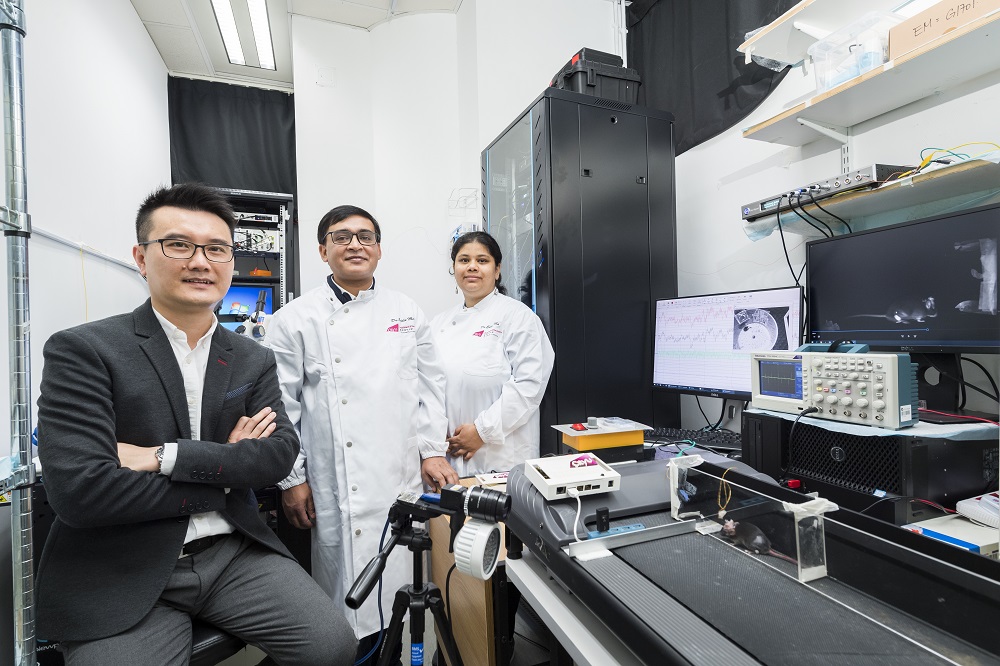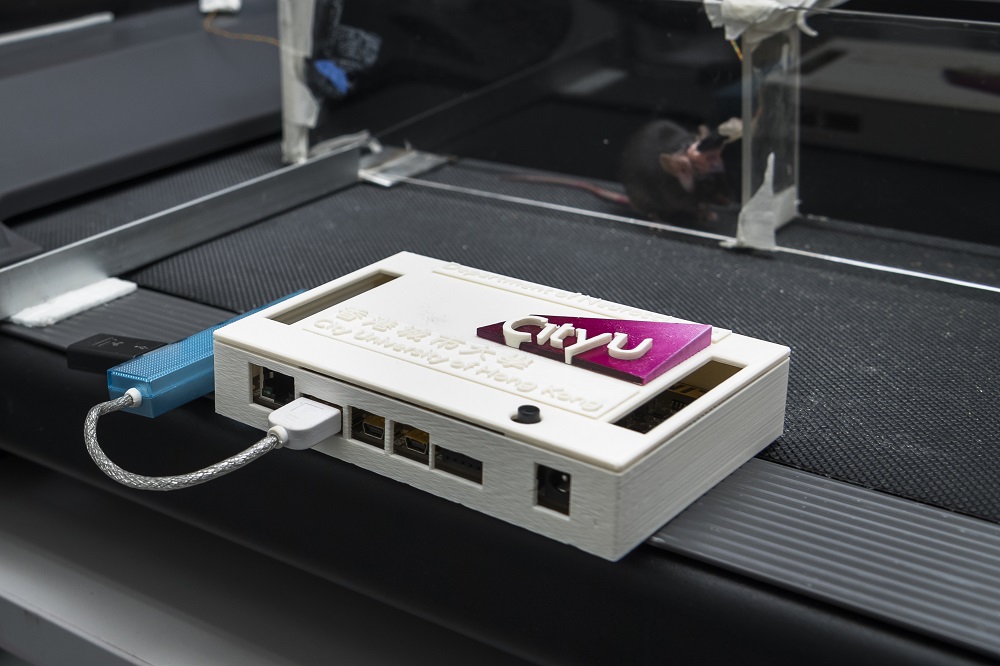Novel Neural Prosthetic Devices for Neurodegenerative Diseases

Patients suffering from spinocerebellar ataxia (SCA) and Parkinson’s disease (PD), two incurable neurodegenerative diseases, often experience problems with movement and motor coordination. Dr Eddie Ma Chi-him, Associate Head and Associate Professor in the Department of Neuroscience and Director of the Laboratory Animal Research Unit (LARU) at CityU, is currently developing novel neural prosthetic devices that could improve patients’ motor symptoms and improve their quality of life.
Neurodegenerative diseases occur when neurons in the brain or peripheral nervous system lose function over time and ultimately die. Dr Ma, who specialises in studying the intrinsic molecular machinery for central and peripheral nervous system regeneration after injury, has adopted a multi-disciplinary approach spanning electrophysiology, molecular biology, anatomy, animal behaviour and genetics, and is working on advancing deep brain stimulation (DBS) treatment strategies to better assist patients with SCA or PD.
SCA refers to a group of genetic, progressive neurodegenerative disorders, characterised by the loss of body balance, motor coordination, speech and oculomotor difficulties, which affect five per 100,000 people worldwide. Scientists have long recognised the importance of cerebellum, which is the balance and fine movement coordination centre of the brain, as a target site for DBS in the treatment of SCA.
Closed-loop DBS to avoid side effects
“However, conventional open-loop DBS involves continuous and excessive brain stimulation, which has undesirable side effects. It also reduces the battery lifetime of deep brain stimulators, which increases the frequency of replacement surgery. It is estimated that over 50% of continuously delivered stimulation via open-loop DBS in PD patients is unnecessary and can be avoided by using a feedback biomarker, as in closed-loop DBS,” explained Dr Ma.
To avoid excessive stimulation, he and his team designed a “closed-loop” deep cerebellar nuclei (DCN) stimulator prototype, which is triggered only when a symptomatic electromyography in the muscle is detected.
The research team is now testing the therapeutic potential of this stimulator prototype in genetically engineered mice with ataxia phenotype. They will first perform electromyography to record muscle activity and video kinematics at different stages of locomotion, and simultaneously record neural activities of DCN in the cerebellum to define symptomatic electromyography activity as a feedback biomarker for closed-loop DBS.
In collaboration with Dr Tin Chun in the Department of Biomedical Engineering, Dr Ma and his team will develop a real-time field-programmable gate array (FPGA) algorithm, targeting interposed nucleus of the DCN to close the loop in ataxia mice. The FPGA system is designed to perform complex computations in real time, completing one-second real-world activities within milliseconds. After carrying out further electrophysiology and motor behavioural assessments, the team expects the motor deficit in SCA mice to improve after DBS and the new device to become more durable, resulting in fewer side effects.
New stimulation target site for treating Parkinson’s disease
Another research focus of Dr Ma is PD, the second most common chronic neurodegenerative disorder, which affects more than 6.1 million of the world’s population and about 1.7% of people aged 60 years or over in China.
Conventional DBS implantation is performed in the ventral intermediate nucleus (VIM) of the thalamus, subthalamic nucleus or globus pallidus interna to modulate either a direct or indirect pathway of the thalamo-cortical-striatal loop. The imbalance between direct and indirect pathways results in abnormal activation of output nuclei and over-inhibition of the thalamus and motor cortex, leading to undesirable side effects, such as cognition impairment, depression and anxiety.
Considering that i) striatum nuclei are the motor integrating centre in the brain modulating both direct and indirect pathways; and ii) the abnormal local field potential (LFP)-beta power and neuronal firing pattern detected in the striatum nuclei of PD patients is associated with motor dysfunction, Dr Ma is exploring striatum nuclei as a novel target site for DBS. His research team has demonstrated that DBS at the striatum nuclei is more effective than DBS at the subthalamic nucleus and globus pallidus interna in improving motor symptoms in two mouse models of PD.
The research team will optimise the DBS parameters so that it is triggered only when a symptom-related biomarker is detected. In collaboration with a US-based company, the optimised therapeutic DBS parameters will be used to develop an implantable microchip prototype of a closed-loop deep brain stimulator using striatum nuclei as a novel DBS target site.

“We believe that the success of the current study will not only minimise side effects in conventional DBS with a new DBS target site, but also take DBS development to the next level by closing the loop. Our closed-loop prototype could minimise unnecessary stimulation in SCA and PD patients to reduce side effects for early intervention,” said Dr Ma.
This research article originated from CityU RESEARCH.